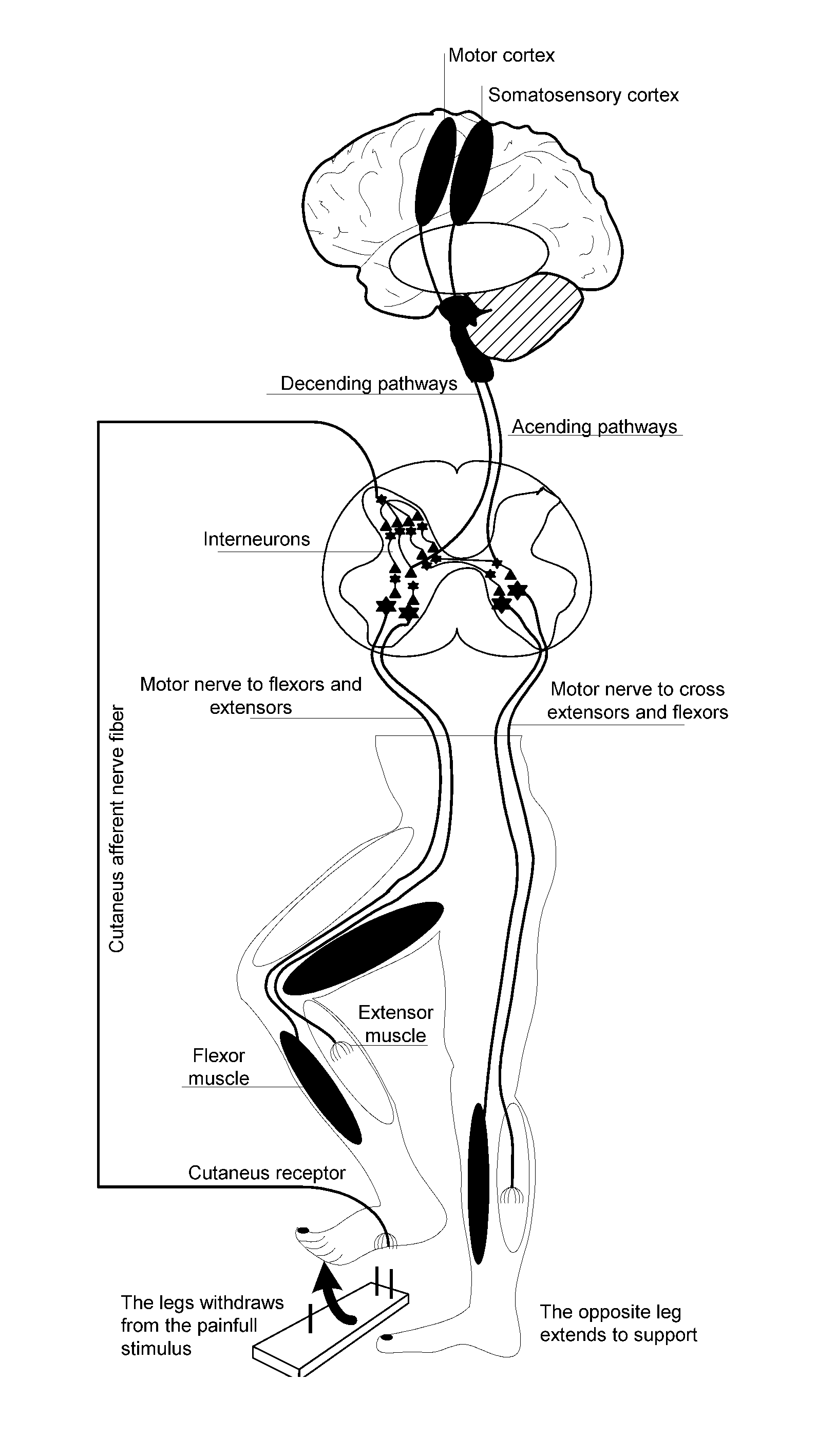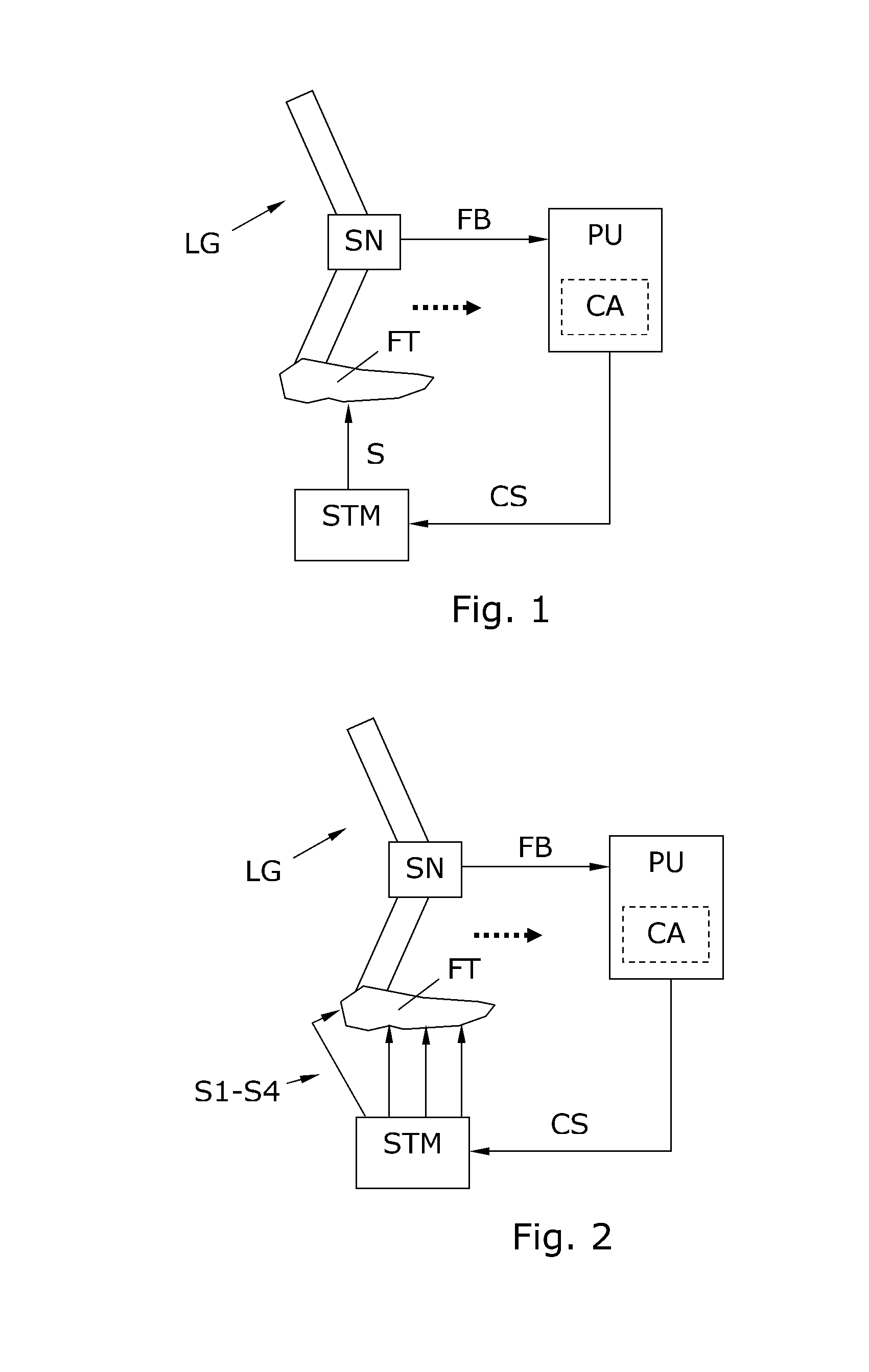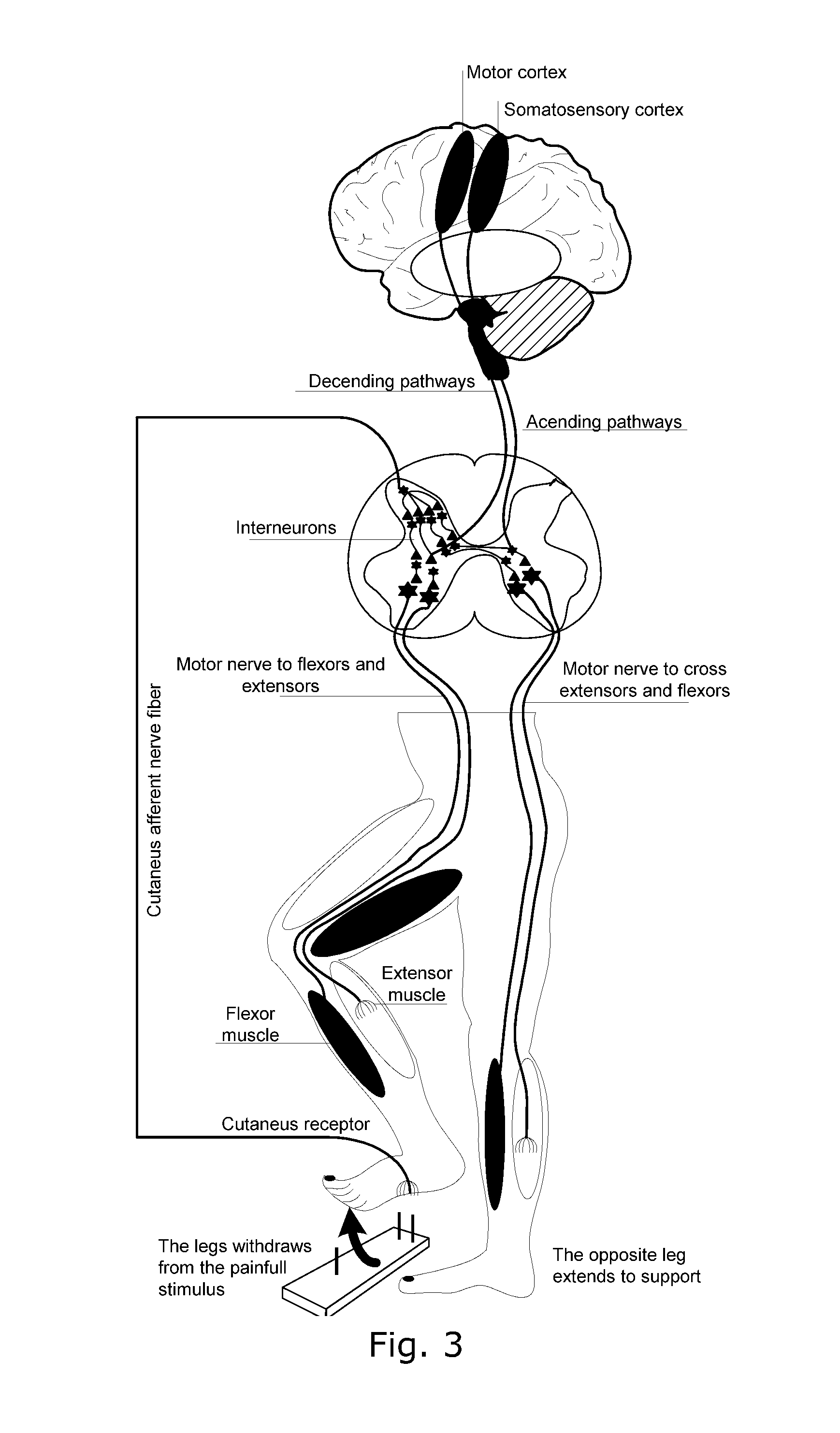[0010]Such a device is highly suited for gait
rehabilitation therapy of post-stroke hemiparetic patients, since the person's own normally functioning nociceptive withdrawal
reflex (NWR) is triggered by stimulation of the foot, thus causing the
spinal cord to generate a reflex in the form of integrated
motor nerve signals leading to adequate contraction of many muscles in the leg that make the person move his / her leg upward and forward and thus initiate the swing phase during walking. Even though this stereotyped flexion can be considered to provide an uncontrollable leg movement, it has been shown in experiments that suitable control of the stimulation, such as proper control us stimulation site, stimulation intensity, stimulation timing, stimulation duration, and stimulation frequency in response to the feedback signal it is possible to evoke suitable hip, knee and
ankle movement to allow a functional
gait cycle, which would otherwise be impossible for a hemiparetic patient. Thus, the use of a closed-
loop control system in the generation of the electrical stimulation allows a quality of gait which is acceptable for gait training. This approach enables sufficient learning input to the brain to be able to regenerate its
gait control function and thus significantly improve the patient's chance of completely restoring the patient's ability to walk and thus generally increase the patient's
quality of life.
[0011]With the
closed loop configuration provided by the feedback signal, e.g. representing an angle of the knee or another feedback parameter, the
control algorithm can be designed to optimize the gait by adjusting different parameters of the stimulation, e.g. stimulus intensity or stimulation site on the foot for each walking step and / or selection of stimulation timing (phase of the
gait cycle), such as selection of a suitable stimulation of more stimulation sites versus time during the
gait cycle. Hereby, it is possible to avoid or at least suppress reflex
habituation effects and thus maintain a high quality of gait during several walking steps and thereby follow a predetermined target trajectory. Even though the rather powerful stimulation required is perceived as painful, the patient has a positive experience with such device, since the patient has the feeling of walking by their own effort and a
perception of rapid improvement of their walking performance. As will be explained in more detail below, the required stimulation can be implemented with only few units with rapid donning and doffing, and thus save time that can be spent for the actual gait training. Hereby the device is suited for physiotherapy clinics, hospitals or rehabilitation centres etc.
[0012]In some embodiments, the stimulator comprises an electric stimulator arranged to generate an electric stimulation on the person's foot to provoke the
spinal cord withdrawal reflex. In a preferred embodiment, the stimulator can generate a sufficient
electric current to induce a withdrawal reaction via cutaneously applied electrodes on multiple sites on the person's foot. Electric stimulation is advantageous, since the intensity can rather easily be adjusted by adjusting the applied current and stimulus duration. However, it is to be understood that other types of stimulation on the foot can be used to cause the withdrawal reflex.
[0018]The sensor may comprise at least one of: a sensor arranged to sense an angle of the person's knee, a sensor arranged to sense a distance between the person's foot and the ground below the foot, one or more contacts arranged to sense if the person's foot touches the ground. Preferably, the sensor is arranged to generate a
continuous feedback signal, or at least a sampled feedback signal allowing a sufficiently precise tracking of the person's leg during one walking step. E.g. the sensor may comprise two or more different types of separate sensors, so as to allow a feedback signal with a more precise tracking of the gait. E.g. the sensor may include an angular sensor to sense a knee angle, and a contact under the foot to sense when the foot touches the ground. The sensor may comprise one or more angular sensors to sense an angle of the hip, knee, and
ankle. Alternatively, or additionally, the sensor comprises: an
accelerometer positioned to sense a movement of the person's foot or leg, a
gyroscope arranged to sense a change in position or angle of parts of the leg, e.g. joints, and a
tilt sensor. One or more of these sensor elements may be built into a sock or shoe so as to eliminate the need for an individual mounting procedure.
 Login to View More
Login to View More  Login to View More
Login to View More 


